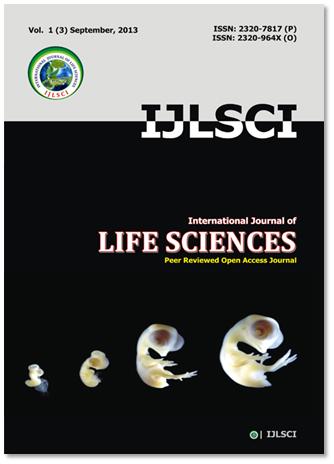Correlation between mite population (Aceria cajani) and environmental factors causing sterility mosaic disease of Pigeon pea
Keywords:
Pigeon pea, Aceria cajani, SMD, viral infectionAbstract
Pigeon pea Cajanus cajan (L.) Millspaugh, is one of the major pulse crops of the tropics and subtropics also popularly known as red gram, tuar or arhar is a primary source of protein for millions in India. Sterility mosaic disease (SMD) caused by mite (Aceria cajani) is a major disease limiting the pigeon pea production in the Indian subcontinent. Effect of abiotic factors like temperature, relative humidity and rainfall on mite population was observed during the experiment. Out of theses abiotic factors strong significant correlation was observed with relative humidity. Average temperature of about 20-30°C was found to be congenial for the multiplication of mite. But very high temperature is not suitable for the growth of mite. Heavy rainfall is also not suitable for the growth of mite. Wind velocity is also a very important factor responsible for spreading of disease. The effect of SMD on plant height along with their branches was also observed and can be concluded that severe mosaic affect the plant height, and branches of the pigeon pea plants. The disease severity was high in the early stage of infection causing severe mosaic disease where flower and pod formation was ceased resulting in complete crop failure.
Downloads
Downloads
Published
How to Cite
Issue
Section
License
Copyright (c) 2013 Authors

This work is licensed under a Creative Commons Attribution-NonCommercial-NoDerivatives 4.0 International License.
Open Access This article is licensed under a Creative Commons Attribution 4.0 International License, which permits use, sharing, adaptation, distribution and reproduction in any medium or format, as long as you give appropriate credit to the original author(s) and the source, provide a link to the Creative Commons license, and indicate if changes were made. The images or other third party material in this article are included in the article’s Creative Commons license unless indicated otherwise in a credit line to the material. If the material is not included in the article’s Creative Commons license and your intended use is not permitted by statutory regulation or exceeds the permitted use, you will need to obtain permission directly from the copyright holder. To view a copy of this license, visit http://creativecommons.org/ licenses/by/4.0/











